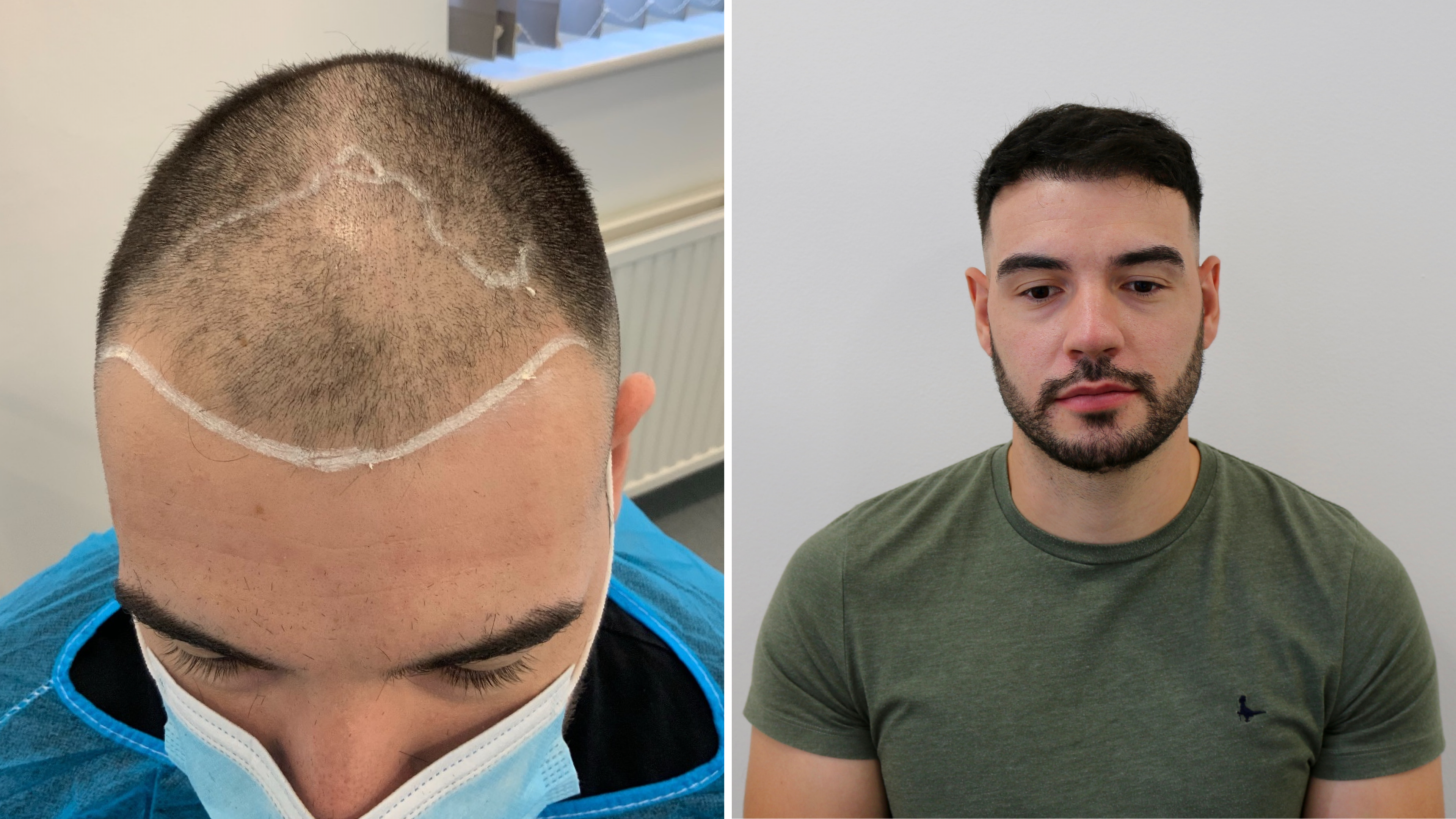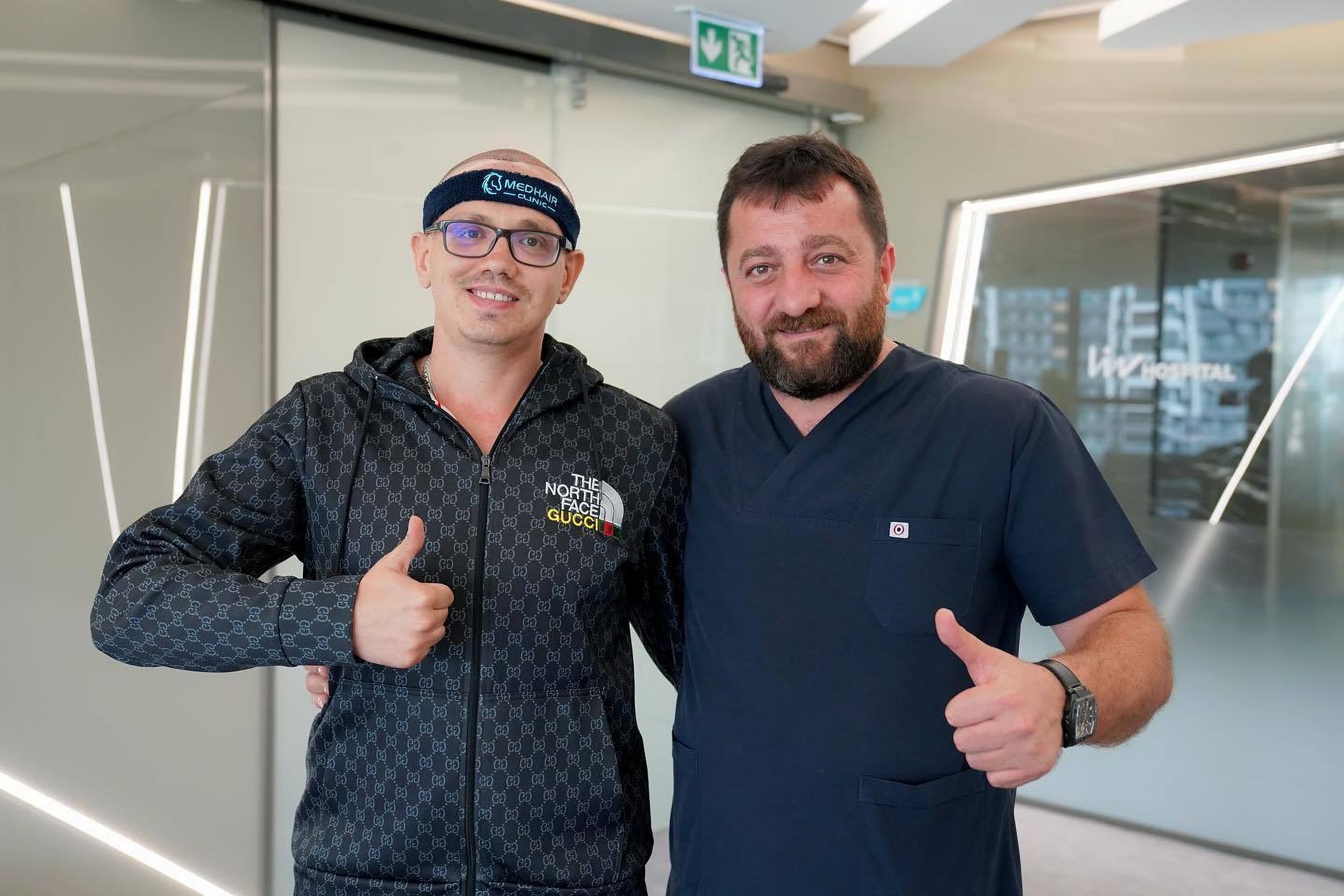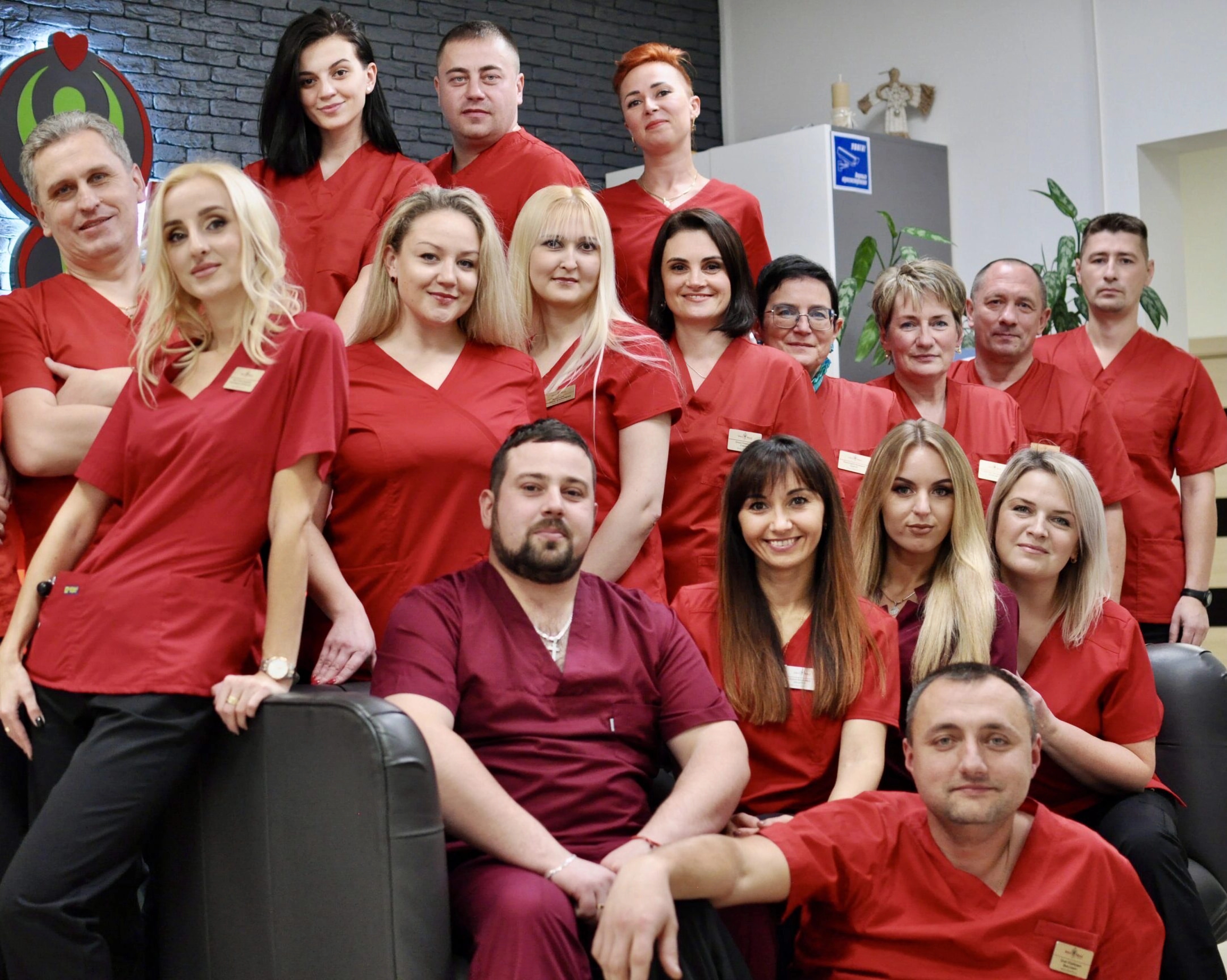Hair transplantation
How do we organize your medical trip?





Hair transplantation
Features of procedure
Functional unit
Hair transplant specialists use the term "graft". It means a single complex for transplantation: a living hair bulb + a hair shaft.
Available areas
Follicle transplants can be performed on almost any area. Hair transplants on the head, beard or parts of the body have become commonplace in many overseas clinics. Modern techniques ensure the successful transfer of any number of grafts with maximum engraftment.

No restrictions on age or gender
Men and women can face alopecia problems or injuries leading to alopecia at any age. The variety of hair transplant techniques successfully make dreams of luxurious hair, eyebrows, or beards come true at both 30 and 70 years of age.
Pricing
If hair transplants are performed on bald spots, the price of the procedure consists of the base cost with a fixed volume of grafts + a surcharge for every 10-100 additional grafts. Anesthesia, room and board expenses are not included in the price of the procedure: keep this in mind when requesting prices.
Types of hair transplants
Classic FUE transplantation
A basic technique for uncomplicated forms of alopecia. The surgeon mass extracts donor grafts using a standard punch, places the follicles in a nutrient solution, and separates them under a microscope. Then, using gauge needles, the doctor makes skin punctures in the transplant area and places the follicles in them.
Scalp hair transplantation using the follicular block method
An excellent correction technique for focal alopecia or scarred skin changes. Using a scalpel, the doctor excises a fragment of 5-8 mm from the donor area, involving the subcutaneous tissue. The released skin segment is sutured with an atraumatic needle with intradermal suturing. The dissected area is similarly divided into grafts and transplanted.
Direct DHI transplantation
The least traumatic method of hair transplantation. The doctor uses a special hollow needle with an expanding tip. Using it automates and greatly simplifies the transplantation process. During one skin puncture, the needle automatically opens the skin channel and extracts several grafts. During the next puncture, the expanding tips of the needle gently open the transplant canal and the doctor immediately places the extracted graft in it.
Sapphire FUE hair transplantation
The "gold standard" of hair transplantation for uncomplicated forms of alopecia. The doctor pierces the skin with a V-shaped sapphire blade several mm thick. The shape of the tip creates a more physiological shape of the puncture and is less traumatic for the skin, unlike the classic micro-needle. The extracted follicles are briefly placed in a physiological solution and then transferred to the reception area.

When hair transplantation is needed
The main and only indication for hair transplantation is baldness. This condition has different causes, and it is the nature of alopecia that determines the possibility of transplantation in a particular patient.
For example, individuals with classical androgenic alopecia, tractional or marginal alopecia are in the classic hair transplant indications group, and usually tolerate the procedure as successfully as possible.
Patients with healed burns and skin injuries can also be treated with hair transplantation, although the outcome is more difficult to predict because of scarring of the skin.
The final conclusion on the necessity of the procedure is made by a doctor.
At the initial consultation stage, you can ask the specialist about the procedure of hair transplantation, the period of healing of the skin after transplantation, the peculiarities of care of the transplanted hair, and other interesting questions.
Autoimmune alopecia and other systemic skin diseases may be contraindications to hair transplantation due to low probability of survival of transplanted grafts. More information about contraindications to the procedure in the next block.
Contraindications to the procedure
As with any other medical intervention, hair transplants for baldness have relative and absolute contraindications.
Relative contraindications
- Diabetes mellitus type I or II;
- Arterial hypertension;
- Chronic skin diseases (seborrheic dermatitis, psoriasis, eczema);
- Profound scarring of the skin in the area of transplantation;
- Metabolic syndrome;
- Under 23 years of age (in most cases, the type of alopecia is not yet clear before this age);
- Other systemic diseases.
Absolute contraindications
- Autoimmune alopecia;
- Atypical or total diffuse alopecia;
- Skin neoplasms in the area of transplantation;
- Furunculosis and other purulent inflammatory diseases (both in the donation area and in the transplant area).
How hair transplantation is performed
After a brief examination and general examination, a specialist marks out areas for transplantation and donation of hair grafts. Marking helps to accurately mark the line of hair growth, as well as gently "close" the empty areas from where the intake of follicles was made.
For example, if you perform a routine hair transplant, it is better to cover the frontal bald spots with "donor" hair from the occipital or temporal part of the head. Hair grafts from these areas are as structurally identical as possible to the hairs on the frontal side of the head. For other formats of transplantation (beard, body, eyebrows) the doctor individually determines the optimal hair type.
After marking, the doctor treats the skin with antiseptic and performs local anesthesia. Then, depending on the chosen surgical technique, the doctor extracts individual hair grafts or a fragment of skin with an extractor. If the patient is undergoing a hair transplant for a beard, an additional FUE punch can be used to extract the follicles more gently.
The extracted material is placed in a sterile bowl with a nutrient solution and, if necessary, separated into individual graft segments under a microscope.
After selecting the necessary amount of material, the plastic surgeon treats the donation area and proceeds to transplantation. A special optic with a powerful backlight helps the specialist see the operating field better. Looking through the magnifying eyepiece, the surgeon pierces the skin with micro needles or V-U blades.
The depth and width of the puncture rarely exceeds a millimeter, which makes the recovery process much faster.
Then, in the recesses at the puncture site, the doctor places the previously extracted hair grafts. After the transfer is complete, the specialist treats the skin and conducts a control inspection of the operating field. Depending on the volume of the transplant, the procedure can take anywhere from 1.5 to 5 hours.
Depending on the additional number of grafts and the technique by which the hair transplant was performed, the cost of the procedure can vary in the $3,000 range. We recommend that this scenario be discussed separately at the initial consultation with a specialist.

Rehabilitation
In total, the recovery process after the intervention takes 7-18 days.
The following factors influence the length of rehabilitation:
- The format of the transplant procedure;
- The area of skin involved in the transplant process;
- The type of hair that was used for the transplant (for example, a beard-to-head hair transplant may require a longer rehabilitation period than a standard head-to-head transplant);
- Medication administration;
- Individual characteristics of the patient's body.
General recommendations for recovery after the procedure:
- Exclusion of heavy physical exertion and aggressive cosmetic procedures.
- The refusal to visit saunas, swimming pools, solariums up to the moment of independent departure of the protective crust.
- In the first week of active healing exclude wearing tight hats, bandages, wigs.
- Wash the scalp with delicate vertical movements, without the use of aggressive shampoos.
- Do not treat the skin in the transplant area with alcoholic antiseptics.
Hair transplantation: advantages
- A natural and healthy look after transplantation;
- Fast restoration of the desired thickness;
- Minimal rejection probability;
- Fast recovery after the procedure;
- Preservation of the result for many years.

Hair transplantation: prices
Although hair transplantation is an operation that does not require in-depth pre-diagnosis, anesthesia and specific rehabilitation, its prices abroad range from $1,200 to $20,000. The cost is influenced by:
- method of transplantation;
- demand for the procedure within the clinic;
- the need for additional examinations (in patients with complex forms of alopecia).
Average cost of the procedure (without taking into account flight and organizational expenses) is presented in the table below.
| Country | Average procedure cost for standard alopecia | Average procedure cost for complex alopecia |
| Israel |
10000$ -13000$ |
17000$ - 20000$ |
| Turkey |
1200$ - 5000$ |
4000$ - 7000$ |
| Germany |
12000$ - 18000$ |
15000$ - 19000$ |
Need a hair transplant? Prices for men 2022, preparation tips and help in choosing a clinic will be provided by your personal consultant. Leave a request and we'll get back to you as soon as possible.
Doctors See all doctors
Hair transplantation: everything you need to know about the procedure
Thick and luxurious hair like a movie star? Restoration of hair growth after burns and injuries? Absence of annoying bald spots and pockets of baldness?
All this is possible thanks to the procedure of hair transplantation. It's hard to believe, but only 10 years ago this procedure was more of a privilege, it was hard to bear, and the cost of transplantation was equal to a full complex of plastic operations. Today it is a routine minor traumatic operation, which is successfully carried out by foreign plastic surgeons.
Hair transplantation to the beard, any parts of the head and body, rehabilitation after traumas, aesthetic hair growth line correction: this is only a short list of possibilities of foreign clinics.
Let your most daring expectations come true: leave your request for a hair transplant procedure right now!











.jpg)
.jpg)
.jpg)





